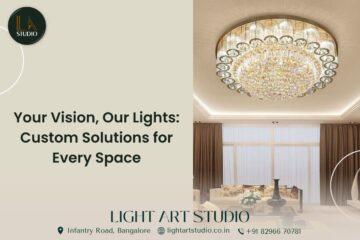Lighting is an essential part of our lives, influencing not only how we see the world but also how we feel and perform. Whether you’re designing a cosy living room or a productive office space, understanding the psychology of lighting can help you create environments that enhance mood and boost productivity. Let’s explore how different types of illumination affect our emotions, why proper lighting is crucial for home design, and how it can elevate the aesthetics of any space.
The Connection Between Light and Human Emotions
Light profoundly impacts our emotions and overall well-being. This connection is rooted in both biological and psychological responses to light.
Biological Responses to Light
Our bodies have an internal clock known as the circadian rhythm, which regulates our sleep-wake cycle. Light exposure plays a crucial role in synchronising this rhythm. Natural light, especially sunlight, helps regulate the production of melatonin, a hormone that controls sleep. In the morning, exposure to bright light suppresses melatonin production, helping us wake up and feel alert. In the evening, dimmer light signals to our body that it’s time to produce melatonin and prepare for sleep.
Psychological Responses to Light
Beyond its biological effects, light also influences our psychological state. Bright, warm light tends to create feelings of happiness and energy, while dim, cooler light can promote relaxation and calmness.
Warm Light: Warm lighting, with its soft glow, has a big effect on how we feel. Here’s how it can lift our spirits and make us feel good.
- Comfort and Relaxation: When we’re surrounded by warm light, like the gentle hues of a sunset, it helps us relax. It’s like wrapping ourselves in a warm blanket after a busy day—it just feels nice and cosy.
- Social Vibes: Ever notice how warm lighting makes gatherings feel more inviting? It’s like a warm hug that encourages people to chat and laugh together. Whether it’s a family dinner or a simple hangout with friends, warm lighting sets the perfect mood for bonding.
- Happy Feels: Warm light doesn’t just make a room look good; it can actually boost our mood. It’s like a little ray of sunshine indoors, making us feel happier and more content.
Neutral Light: Neutral lighting, with its balanced tone, can also affect how we feel. Here’s how it can influence our mood in a positive way.
- Clarity and Calmness: Neutral light strikes a balance between warm and cool tones, creating a sense of clarity and calmness. It’s like a gentle breeze on a sunny day—it helps clear our minds and soothe our senses.
- Focus and Relaxation: Unlike warm light, which leans towards relaxation, neutral light offers versatility. It’s great for spaces where we need to focus, like kitchens or home offices, but it’s also calming enough for relaxation.
- Stress Relief: When our surroundings are bathed in neutral light, it can help reduce stress and tension. It’s like hitting the reset button on a hectic day.
Cool Light:Cool lighting, with its bright and energising vibe, also plays a role in how we feel. Here’s how it can affect our mood in a positive way.
- Alertness and Focus: Cool light mimics the brightness of daylight, making us feel more awake and alert. It’s like a refreshing splash of water on a sleepy morning
- Productivity Boost: When we’re surrounded by cool light, it can give us a productivity boost. It’s like flipping a switch in our brains that says, “Let’s get things done!”
- Refreshing Atmosphere: Cool light creates a Refreshing atmosphere that sparks creativity and inspiration. It’s like stepping into a bright, sunny day that fills us with energy and enthusiasm.
Importance of Proper Lighting in Housing Design
Good lighting design is more than just a functional requirement; it is a vital component of creating a home that feels comfortable, inviting, and aesthetically pleasing.
Enhancing Aesthetics
Lighting plays a significant role in highlighting architectural features and decor. Well-placed lights can accentuate textures, colours, and focal points within a room. For example, recessed lighting can draw attention to artwork on the walls, while under-cabinet lighting can make a kitchen look more modern and sleek.
Creating Ambiance
Different rooms serve different purposes, and the lighting should reflect that. In living rooms and bedrooms, where relaxation is the main goal, softer, warmer lighting creates a serene environment. In contrast, bright, task-oriented lighting is essential in kitchens and home offices to ensure activities can be performed safely and efficiently.
Boosting Mood and Productivity
Proper lighting can significantly affect your mood and productivity levels. In workspaces, sufficient illumination reduces eye strain and fatigue, allowing you to stay focused and work more efficiently. In areas meant for relaxation, softer lighting helps you unwind and destress after a long day.
Flexibility and Control
Modern lighting solutions offer flexibility and control, allowing homeowners to adjust the lighting to suit their needs and preferences. Dimmer switches, smart bulbs, and adjustable fixtures enable you to create different lighting scenes for various occasions, enhancing both functionality and comfort.
The Impact of Lighting on Productivity
In environments where productivity is key, such as home offices or study areas, lighting can make a significant difference in performance and efficiency.
Natural Light
Natural light is the most beneficial for productivity. Exposure to natural light helps regulate the circadian rhythm, improving sleep quality and overall health. Studies have shown that workplaces with ample natural light can boost employee productivity, reduce absenteeism, and enhance well-being. Whenever possible, position workspaces near windows to maximise natural light exposure.
Artificial Lighting
When natural light is insufficient, artificial lighting must be carefully planned. Here are some tips to optimise lighting for productivity:
- Use Cool Light: Cool, white light (4000K – 6500K) mimics daylight and promotes alertness and concentration. It’s ideal for work areas where tasks require precision and focus.
- Avoid Glare: Glare can cause eye strain and discomfort, reducing productivity. Use diffused lighting or fixtures with shades to minimise glare. Positioning lights at the correct angle can also help.
- Layered Lighting: Combining different types of lighting—ambient, task, and accent lighting—creates a well-balanced environment. Ambient lighting provides overall illumination, task lighting focuses on specific work areas, and accent lighting adds depth and interest to the space.
Practical Tips for Home Lighting Design
Creating a well-lit home involves more than just installing a few light fixtures. Here are some practical tips to help you design effective lighting for your home:
Living Room
The living room is a multifunctional space used for relaxing, entertaining, and sometimes working. Layered lighting works best here:
- Ambient Lighting: Use ceiling fixtures, such as chandeliers or recessed lights, to provide general illumination.
- Task Lighting: Floor lamps and table lamps near seating areas offer focused light for reading or other activities.
- Accent Lighting: Wall sconces or track lighting can highlight artwork, plants, or architectural features.
Kitchen
The kitchen requires bright, functional lighting to ensure safety and efficiency:
- Ambient Lighting: Install bright overhead lights or recessed fixtures.
- Task Lighting: Under-cabinet lights provide focused illumination for cooking and food preparation areas.
- Accent Lighting: Pendant lights over an island or breakfast bar add style and additional light where needed.
Bedroom
The bedroom should be a restful sanctuary with soft, calming lighting:
- Ambient Lighting: Use dimmable ceiling lights or wall sconces to create a relaxing atmosphere.
- Task Lighting: Bedside lamps are essential for reading and other activities.
- Accent Lighting: Fairy lights or LED strips can add a touch of whimsy and create a cozy environment.
Bathroom
Bright, clear lighting is necessary in bathrooms for grooming and hygiene tasks:
- Ambient Lighting: Overhead fixtures or recessed lights provide general illumination.
- Task Lighting: Sconces or vertical fixtures on either side of the mirror reduce shadows on the face.
- Accent Lighting: Consider adding strip lighting under cabinets or around the mirror for a modern touch.
Home Office
A well-lit home office is crucial for productivity:
- Ambient Lighting: Use ceiling lights or floor lamps to provide overall light.
- Task Lighting: A desk lamp with adjustable brightness helps reduce eye strain.
- Natural Light: Position your desk near a window if possible, but avoid placing the computer screen directly in front of or behind it to reduce glare.
Conclusion
Lighting is a powerful tool that can significantly influence our mood, productivity, and overall well-being. Understanding the psychology of lighting helps us create environments that support our daily activities and enhance our quality of life.
At LightArt Studio, we understand the importance of lighting in creating the perfect ambiance for any space. Our expert team is here to help you choose the right lighting solutions to enhance your home’s design and improve your quality of life. Explore our range of lighting products and design services to find the perfect illumination for your needs. Let’s light up your life with style and purpose!



